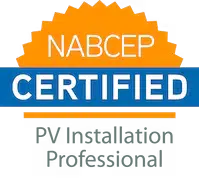How Do Solar Tax Credits Work?
Solar panels have become an increasingly popular source of renewable energy, providing environmental benefits and potential cost savings for homeowners and businesses. One of the key financial incentives for investing in solar panels is the solar tax rebate or credit provided by the government. In this comprehensive guide, we will break down how solar tax rebates work, focusing on how much homeowners and business owners can get, eligible expenses, and the long-term money-saving benefits of the solar tax credit. So, let’s dive in and demystify solar tax rebates!
How Solar Tax Rebates Work
Solar tax rebates are offered by both federal and state governments as a way to encourage the adoption of solar energy. The federal government, in particular, provides a solar tax credit that allows homeowners and business owners to deduct a portion of the qualifying expenses for the installation of solar panels from their federal income taxes. This gives homeowners thousands in return and allows solar panel owners to save on their electric bills in the future.
How Much Homeowners Get
Under the current federal solar tax credit, homeowners can receive a tax credit of up to 30% of the total cost of their solar panel installation[1]. This means that if the total cost of installing solar panels is $15,000, a homeowner can receive a tax credit of up to $3,900.
How Much Business Owners Get
Business owners, on the other hand, can also benefit from the federal solar tax credit. They are eligible for the same tax credit rate of up to 26% of the total installation cost[1]. However, in some cases, business owners may have the option to claim accelerated depreciation for their solar panel systems, which can provide further tax benefits.
Eligible Expenses for the Solar Tax Credit
When it comes to qualifying for the solar tax credit, it’s essential to understand which expenses are eligible and which are not. Let’s dive deeper into it.
To qualify for the solar tax credit, the expenses must be directly related to the installation of solar panels. Here are some eligible expenses that can be included when calculating the credit:
Cost of Solar Panels: The cost of the solar panels themselves is eligible for the tax credit. This includes the actual photovoltaic (PV) panels that convert sunlight into electricity.
Mounting Equipment: Expenses related to the mounting equipment required to install the solar panels, such as racking and brackets, are eligible for the tax credit. These components ensure that the solar panels are securely installed and properly positioned.
Wiring: The expenses associated with the wiring necessary to connect the solar panels to your electrical system qualify for the tax credit. This includes the wiring used to connect the panels to inverters and other components.
Inverters: Inverters are essential for converting the direct current (DC) electricity generated by solar panels into alternating current (AC) electricity that can be used in homes or businesses. The cost of inverters is eligible for the tax credit.
Labor Costs: The labor costs incurred during the installation of the solar panel system are also eligible for tax credit. This includes the payment for skilled professionals who handle the installation, electrical work, and related tasks.
However, it’s important to note that not all expenses associated with solar panels are eligible for the tax credit. The following expenses are typically not eligible:
Repairs and Maintenance: Any repair or maintenance costs incurred after the installation of the solar panel system are generally not eligible for the tax credit. This includes expenses related to fixing or replacing faulty equipment.
Upgrades and Enhancements: If you decide to upgrade or enhance your solar panel system after the initial installation, the expenses associated with these improvements are typically not eligible for the tax credit.
Other Non-essential Costs: Expenses that are not directly related to the installation of the solar panel system, such as costs for landscaping or upgrading aesthetic features, are generally not eligible for the tax credit.
Understanding the distinction between eligible and ineligible expenses is crucial to ensure you accurately calculate the tax credit amount. Always consult with a SolaTrue professional or refer to the IRS guidelines for the most accurate and up-to-date information on eligible expenses.

How the Tax Credit Saves Money Long Term
The solar tax credit offers significant long-term savings for both homeowners and business owners. By reducing the upfront cost of installing solar panels, the tax credit makes solar energy more accessible and affordable. This means that homeowners and business owners can start enjoying the benefits of solar energy sooner and begin realizing savings on their electric bills.
Once the solar panels are installed, the savings continue to accumulate over time. Solar panels generate clean electricity from sunlight, reducing the reliance on traditional energy sources and decreasing the need to draw power from the grid. As a result, homeowners and business owners can see substantial reductions in their electric bills. In some cases, solar panel systems can even generate excess electricity, which can be sold back to the grid, further increasing the savings.
Moreover, the cost of solar panel installations has been decreasing over the years, making it even more financially viable for individuals and businesses to adopt solar energy. Taking advantage of the solar tax credit now can provide immense savings over the lifespan of the solar panel system.
Solar tax rebates, particularly the federal solar tax credit, provide valuable financial incentives for homeowners and business owners to invest in solar energy. By understanding how solar tax rebates work, individuals and businesses can make informed decisions regarding their solar panel installations and take advantage of the potential cost savings in the long term.
We hope this comprehensive guide has demystified the complex world of solar tax rebates and provided you with valuable insights. Leap towards a cleaner energy future and enjoy the benefits of solar energy while saving money in the process.
Disclaimer: This blog post provides general information and should not be considered as tax or financial advice. Always consult with a qualified professional for personalized guidance.
Sources:






